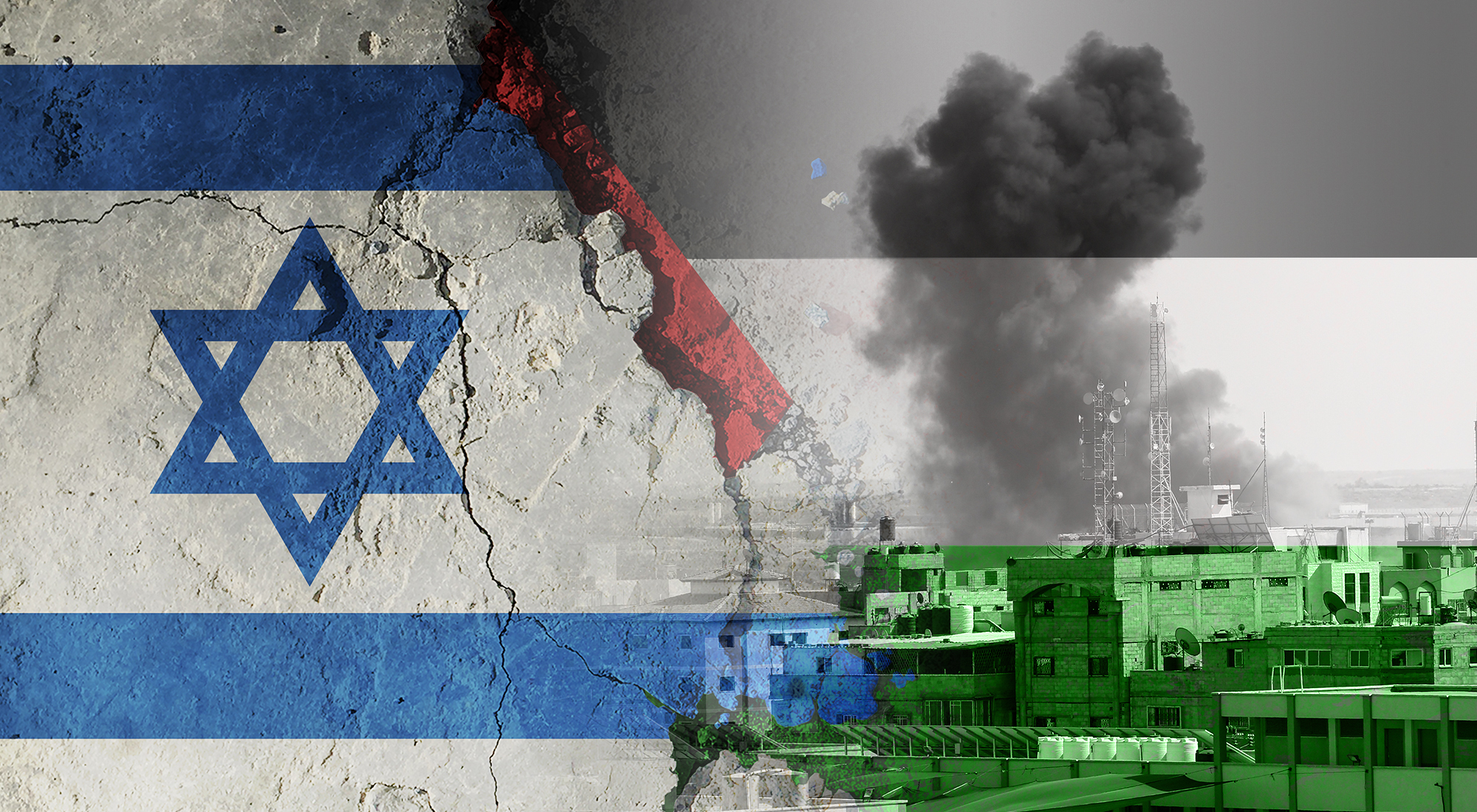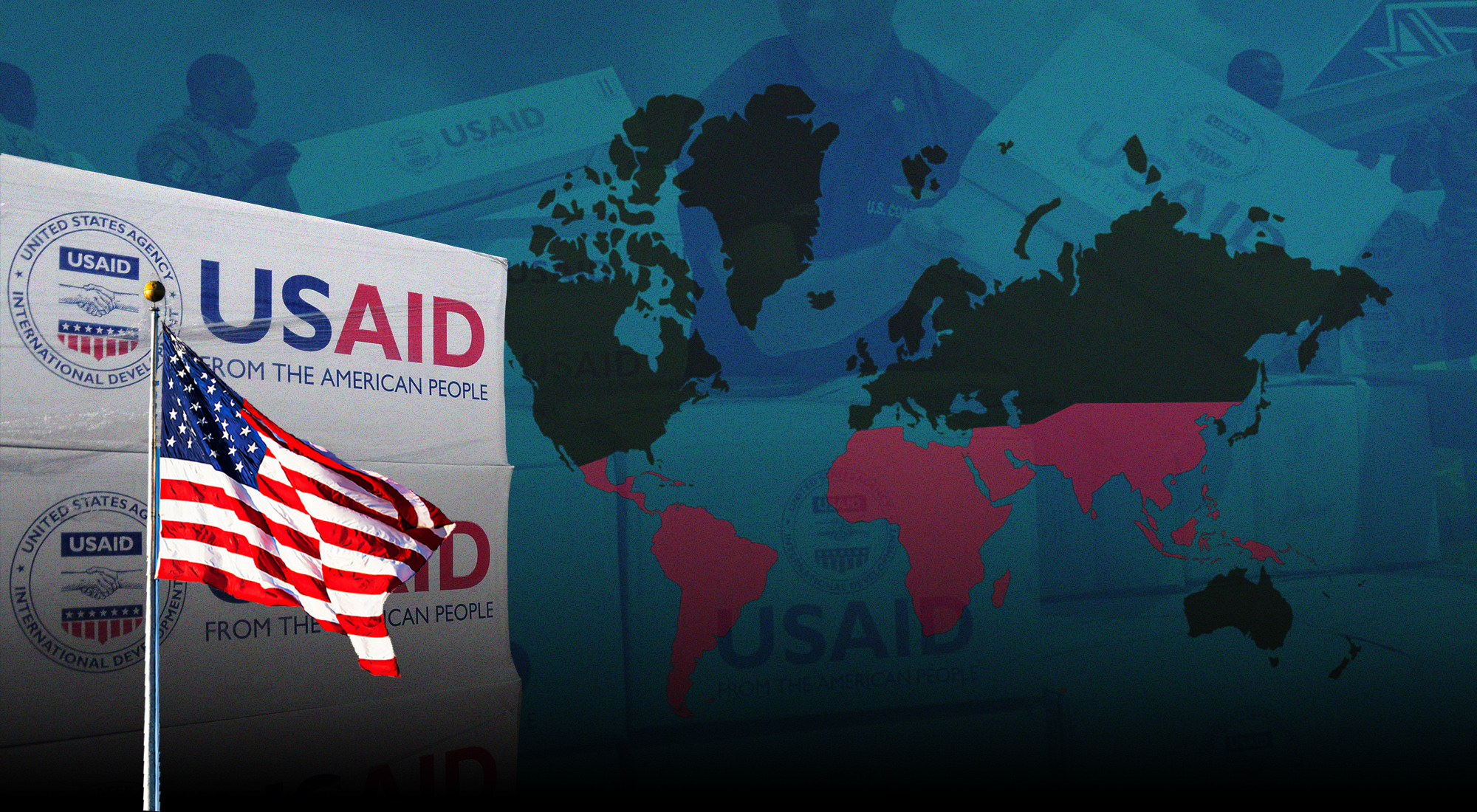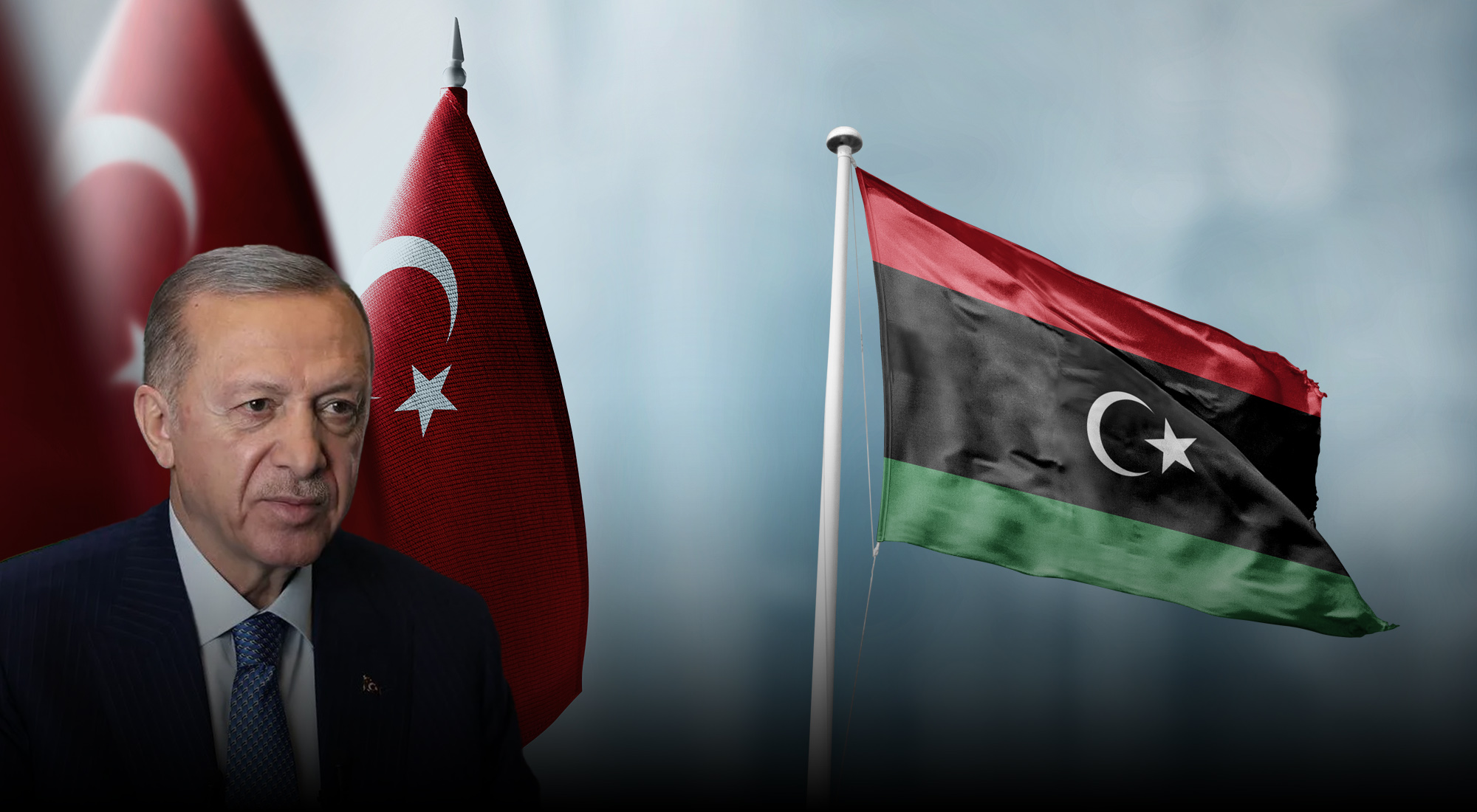On August 5, the Israel Defense Forces (IDF) initiated an air campaign on the Gaza Strip, targeting the infrastructure of the Palestinian Islamic Jihad (PIJ). The offensive was of a pre-emptive nature: five days earlier, Israel had arrested Bassem al Saadi, a senior leader of the PIJ operating in the West Bank. Following the arrest, tensions quickly rose as Israelis braced themselves for possible retaliations from the PIJ. Roads in southern Israel were closed, and soldiers were deployed to the border with Gaza. Eventually, the government of Prime Minister Yair Lapid took the decision to launch airstrikes before the threat from the PIJ materialized.
The war that followed only lasted three days, with a total of 147 airstrikes. It ended in an overwhelming military victory for the IDF that was praised by many observers inside Israel. Domestically, the war played well to boost Lapid’s popularity. However, being a centrist with no national security background, Lapid faces a tough election in November. Polls so far suggest that his party, Yesh Atid, is unlikely to secure a majority in the Knesset while former prime minister Netanyahu is preparing for a comeback.[1]
Unsurprisingly, international reactions to the operation were much more critical. Several NGOs condemned the fact that the IDF did not respond to an attack of the PIJ, but initiated the war. But more broadly, the international media coverage reflected a deep sentiment of fatigue and frustration regarding the Israeli-Palestinian conflict. In the last fourteen years, the frequency of wars over Gaza has left many media outlets covering each one as if it were a vain sequel to the previous one.
Still, it is worth taking a closer look at Operation Breaking Dawn: not because it is a turning point in any way but rather because it highlights some underlying trends in the Israeli-Palestinian conflict, as well as in inter-Palestinian politics.
An impressive military campaign
The first lesson from the war is that the PIJ proved to be less powerful than what could have been expected. In the first twenty-four hours of the conflict, the Israelis were able to kill the two most important military commanders of the PIJ: Tayseer Jabari and Khaled Mansour. These targeted assassinations decapitated the PIJ leadership in Gaza and revealed strong coordination between the Shin Beth – Israel’s domestic security service monitoring the terrorist entities in Gaza – and the IDF.
Considering these killings as a “declaration of war”, the PIJ retaliated by firing about 1,100 rockets and mortars on Israel. But these attacks failed as they either landed in unpopulated areas or were intercepted by Iron Dome. Some of the rockets even landed in Gaza instead of Israel; an initial report from Gaza claiming that an IDF strike had killed children in the Jabaliya refugee camp was refuted by the Israeli government, who maintained that the killings were caused by a Gaza rocket misfire.[2]
Again, Israel’s missile defense system displayed impressive performance, with a reported 97% interception rate.[3] As a result, the number of casualties in Israel was minimal, with only 70 people injured. The human toll was much more significant for the Palestinians, with 46 killed (including 17 children) and 360 injured.[4]
Contrary to Hezbollah in Lebanon in July 2006 or Hamas in the last four major wars fought inside Gaza since 2008, the PIJ proved unable to inflict serious damage on Israel. After three days, its military structure was in such disarray that it may have actually surprised the IDF commanders, who had initially prepared for a one-week campaign. Overall, the PIJ suffered a major blow in only three days, taking them “back decades” according to Israeli officials.[5] This first lesson – the strategic weakness of the PIJ – matters not only for military analysis; it also informs us on the evolving politics inside Gaza.
The war and Palestinian politics
One other key lesson from the three-day war was the absence of solidarity between the PIJ and Hamas. This was Yair Lapid’s biggest gamble: launching an offensive against one Palestinian entity in anticipation that the other one would stay quiet. The gamble was based on the idea that Hamas had much more to lose by intervening.
On the surface, Hamas and PIJ are both partners of the “axis of resistance” against Israel. Their militants may have personal ties and share ideological affinities, but relations between the leaderships of the two organizations tend to be more suspicious.
Hamas has been de facto governing the Gaza Strip since the 2006 elections, making it accountable for Gaza’s living conditions – from the economy to health infrastructures. Hamas also sees itself as the strongest Palestinian political force vis-à-vis the aging and corrupted Fatah of Mahmoud Abbas. As a result, Hamas sometimes displays signs of political realism vis-a-vis Israel. For instance, in 2017, it revised its charter and accepted the principle of a Palestinian State within the 1967 borders.
The politics of the PIJ are different. Because it has no governing responsibility, the movement can stay away from the nitty gritty of Gaza governance. It has no agenda apart from military resistance against Israel and its leaders are die-hard Islamists that have never indicated any sign of pragmatism. As a result, Operation Breaking Dawn may have served to neutralize and isolate the PIJ. It challenged the reality of an “axis of resistance” and revealed the true fragmentation of the Palestinian political landscape.
Still, it is a risky gamble that could indirectly empower Hamas. The latter may have stood by but it did not take action to prevent PIJ rocket attacks either, despite requests by Israel and Egypt. It is unclear if this restraint was intentional or a result of Hamas’ lack of influence on PIJ commanders. In the end, Hamas sat on the fence because that was its most convenient option: it left the IDF degrade the capabilities of one of its potential competitors in Gaza while focusing on its own rearmament that greatly suffered after the war of last year.
This may also serve Hamas in its turf battle with Fatah. The last war of May 2021 had already dramatically undermined the credibility of the Palestinian Authority in the eyes of the Palestinians. Increasingly, people in both Gaza and the West Bank seem to consider Hamas as the sole organization able to defend them in front of the IDF.[6] As speculations over the succession of Mahmoud Abbas keep growing, this latest operation is likely to consolidate Hamas’ popularity.[7]
Weakening Iran’s regional clout
The absence of solidarity between Hamas and the PIJ also relates to a significant difference between the two entities regarding their partnership with Iran. Back in the 1990s, Hamas was suspicious of Iran’s involvement in the Palestinian territories. Its founding leader, the late Sheikh Yassin, reportedly despised the Iranian regime and it was only after his death in 2004 that the military cooperation expanded. But even then, Hamas-Iran relations were more a marriage of convenience than a natural alliance.[8]
In contrast, the PIJ has always cultivated its proximity with the Iranian regime. Its founder, Fathi Shikaki, openly admired the Islamic revolution model and translated Ayatollah Khomeini’s speeches into Arabic.[9] These were not just ideological affinities: Iran is the most important state sponsor of the PIJ and the military power of the latter relies heavily on supplies from Tehran. It is no coincidence that PIJ Secretary General Ziad Nakhaleh was in fact in Tehran to meet with President Raisi when Operation Breaking Dawn started.[10] As summarized by Eran Lerman and Pnina Shuker, “Hamas may work with the Iranians, but PIJ works for Iran.”[11]
Additionally, like Hamas in Gaza, Hezbollah in Lebanon stood by as well. Its Secretary General Hassan Nasrallah may have condemned the operation and praised the operations of the PIJ, but the group refrained from getting into the conflict.[12]
In the end, the war reflected the cracks in Iran’s proxy strategy. The absence of reactions from Hamas and Hezbollah demonstrated the limits to Tehran’s ability to rely on a network of proxies in the Middle East and to mobilize them into a multi-front war.
A precious Egyptian mediation
Eventually, after three days of fighting, a ceasefire was brokered by the Egyptian government with an official statement ambiguous enough to leave room for both sides to claim victory. Again, Egypt proved to be an essential actor in preventing greater escalation. Like the conflict of May 2021, this was facilitated by close coordination between the Egyptians and the Qataris. The reconciliation between Cairo and Doha after the 2017-2020 crisis allowed both sides to reengage on the Gaza issue. Qatar remains a key financial sponsor of Hamas and both Israel and Egypt pragmatically accept that reality in order to avoid the complete collapse of Gaza.
But Egypt finds itself in a delicate position on the Gaza issue. On the one hand, Cairo may see the neutralization of Islamist groups operating at its borders as a positive development for its own security interests. But on the other hand, it does not want to be seen in the eyes of Arab communities as the complicit partner of Israel in the conflict. While the ceasefire was approved, and Prime Minister Lapid called President Abdel Fattah el Sissi to thank him for Cairo’s mediation, Egyptian diplomats condemned Israel’s attitude. That same day, Egypt’s delegate at the United Nations blamed Israel for “allowing settlers, under police protection, to enter the Aqsa Mosque compound, violating the legal and historical status of the holy site.”[13]
Apart from that, the war did not lead to any significant involvement from international players. Most importantly, the US administration of President Joe Biden proved again that besides expressing its support to Israel and vaguely calling for de-escalation, it had no desire to intervene in the conflict. Talking on the day the ceasefire was announced, the US President recalled his “long-standing and unwavering” support for Israel’s “right to defend itself against attacks.” He carefully stated about the issue of civilian casualties that his “administration supports a timely and thorough investigation into all of these reports.”[14] But that was all.
A fragile return to the status quo
For all the upbeat comments from military analysts in Israel about the IDF’s performance during Operation Breaking Dawn, the intervention did not fundamentally alter the equation of the Israeli-Palestinian conflict. At best, it removes, for the time being, the PIJ from the list of serious threats to Israel. But this is a tactical win, nothing more.
After Hamas took control of Gaza in 2007, the Israeli government of then prime minister Netanyahu estimated that the best response was to contain the Strip via a blockade. Since then, years of wars between the IDF and Hamas have desensitized the Israeli public opinion as well as the international community, leaving the impression that the only realistic option is to accept the status quo and, from time to time, launch a military intervention to “ mow the grass.”[15] But maintaining such thinking is problematic for both humanitarian and strategic reasons.
At the humanitarian level, the consequences have been tragic for the 2 million Gazan population that suffers from one of the highest unemployment rates in the world. Last June, a study by Save the Children estimated that four of five children in Gaza suffer from depression.[16] In the absence of decent public infrastructures, and confronted with power shortages, people are basically left in survival mode.
Meanwhile, in southern Israel, the conflict has led to a new “normal”, where cities like Sderot are filled with bomb shelters (including children’s playgrounds).[17] Israel’s government may praise the performance of Iron Dome but the post-traumatic stress disorder caused by the regularity of rocket attacks remains a terrible cost for its population.[18]
Even at the strategic level, the current Israeli posture is questionable. In the short term, it may be reassuring for military planners to look at operations like Breaking Dawn as a way to restore the IDF upper hand on Gaza and degrade the firepower of Islamist groups. But that framework of analysis perpetuates a cycle of intractable wars. Hamas may have abstained from joining the fight but, as mentioned above, that was mainly because it cared more about rearming its military structure than defending one of its competitors.
In the longer term, the IDF may find it more and more difficult to effectively “mow the grass” in Gaza. The firepower of organizations like Hamas and the PIJ will eventually grow again. Moreover, the proliferation of military technologies, such as UAVs and precision-guidance kits, in the hands of non-state actors portends a dark future for Israel’s ability to protect its territory. This means that effective, but costly, systems like Iron Dome will need to be constantly upgraded – and by extension this suggests that Israel will increasingly rely on the US for the replenishment of its capabilities.
In other words, the Israeli strategic rationale for staying the course is not even grounded in a realistic assessment of the security environment; instead, it is the result of a compromise: in the absence of a political settlement, the short-term solution is to manage – rather than solve – the conflict. Admittedly, the fact that Palestinian politics have been basically frozen by the Fatah-Hamas standoff for more than a decade further feeds the belief that the conflict is intractable.
For the moment, Israelis will quickly turn the chapter of this past Gazan war and refocus on the upcoming election – except for the residents in the south that are likely dreading the resumption of rocket sirens. Meanwhile, in Gaza, the population will mourn their dead and Hamas will continue with its rearmament, while keeping a close watch on Ramallah until the day Mahmoud Abbas leaves the scene of Palestinian politics.
References
[1] “Israel Election: Pro-Netanyahu Bloc Loses Projected Majority in Polls after Gaza Fighting,” Haaretz, August 8, 2022, https://bit.ly/3bYhBHF.
[2] Emanuel Fabian, “Israel Says Gaza Terrorists’ Failed Rocket Launch Kills Several Palestinian Children,” The Times of Israel, August 6, 2022, https://www.timesofisrael.com/israel-says-gaza-terrorists-failed-rocket-launch-kills-several-palestinian-children/.
[3] “Israel Says Iron Dome Shoots Down 97% of Gaza Rockets,” Reuters, August 7, 2022, https://www.reuters.com/world/middle-east/israel-says-iron-dome-shoots-down-97-gaza-rockets-2022-08-07/.
[4] United Nations, “Fresh Israel-Palestinian Islamic Jihad Truce Prevents ‘Full-scale War’,” UN News, August 8, 2022, https://news.un.org/en/story/2022/08/1124212.
[5] Neri Zilber, “Israel and Gaza Keep Up Their Precarious Dance,” New Lines Magazine, August 9, 2022, https://newlinesmag.com/reportage/israel-and-gaza-keep-up-their-precarious-dance/.
[6] See Public Opinion Poll N°80, Palestinian Center for Policy and Survey Research, June 15, 2021, http://pcpsr.org/sites/default/files/Poll%2080%20English%20full%20text%20June2021.pdf.
[7] Mohammad Al Kassim, “News of Abbas’ Poor Health Raises Concern about Successor,” The Media Line, June 6, 2022, https://themedialine.org/by-region/news-of-abbas-poor-health-raises-concern-about-successor/.
[8] International Institute for Strategic Studies, ed. Iran’s Networks of Influence in the Middle East (London: International Institute for Strategic Studies, 2019): pp.71-73.
[9] Wissam Alhaj, Nicolas Dot-Pouillard, and Eugénie Rébillard, De la Théologie à la Libération: Histoire du Jihad Islamique Palestinien (Paris: La Découverte, 2014).
[10] “Iran Discusses Islamic Jihad’s Comprehensive Plan for a Strong Response,” Asharq Al-Awsat, August 8, 2022, https://english.aawsat.com/home/article/3803916/iran-discusses-islamic-jihads-comprehensive-plan-strong-response.
[11] Eran Lerman and Pnina Shuker, “Israel Wins a Round in the Proxy War with Iran,” The Jerusalem Strategic Tribune, August 2022, https://jstribune.com/lerman-shuker-israel-wins-proxy-war-with-iran/.
[12] “Sayyed Nasrallah: The Resistance in Palestine Can Protect Its People and Focus on the Deterrence Equation” [in Arabic], Al Mayadeen, August 7, 2022. https://www.almayadeen.net/news/politics/.
[13] United Nations, “Ceasefire Between Israel, Palestinian Militants ‘Fragile’, Middle East Coordinator Tells Security Council, Urging All Parties to Uphold Truce, Safeguard Past Gains,” Meetings Coverage: 9107th Meeting, August 8, 2022, https://press.un.org/en/2022/sc14994.doc.htm.
[14] “Biden Welcomes Ceasefire, Calls for Investigation into Civilian Casualties,” Jerusalem Post, August 8, 2022, https://www.jpost.com/breaking-news/article-714159.
[15] Efraim Inbar and Eitan Shamir, “‘Mowing the Grass’: Israel’s Strategy for Protracted Intractable Conflict,” Journal of Strategic Studies 37, no.1 (2014), https://doi.org/10.1080/01402390.2013.830972.
[16] Claire Mason, Trapped: The Impact of 15 Years of Blockade on the Mental Health of Gaza’s Children, Save the Children (2022), https://resourcecentre.savethechildren.net/document/trapped-the-impact-of-15-years-of-blockade-on-the-mental-health-of-gazas-children/.
[17] Tal Kra-Oz, “A Look at Israeli Life Just Outside the Gaza Strip,” Tablet, July 10, 2014, https://www.tabletmag.com/sections/news/articles/a-look-at-israeli-life-just-outside-the-gaza-strip.
[18] Michael Bachner, “Southern Israel Residents Increasingly Traumatized by Gaza Rockets, Group Says,” The Times of Israel, May 12, 2019, https://www.timesofisrael.com/southern-israel-residents-increasingly-traumatized-by-gaza-rockets-group-says/.
The strategic lessons of Israel’s ‘Operation Breaking Dawn’







